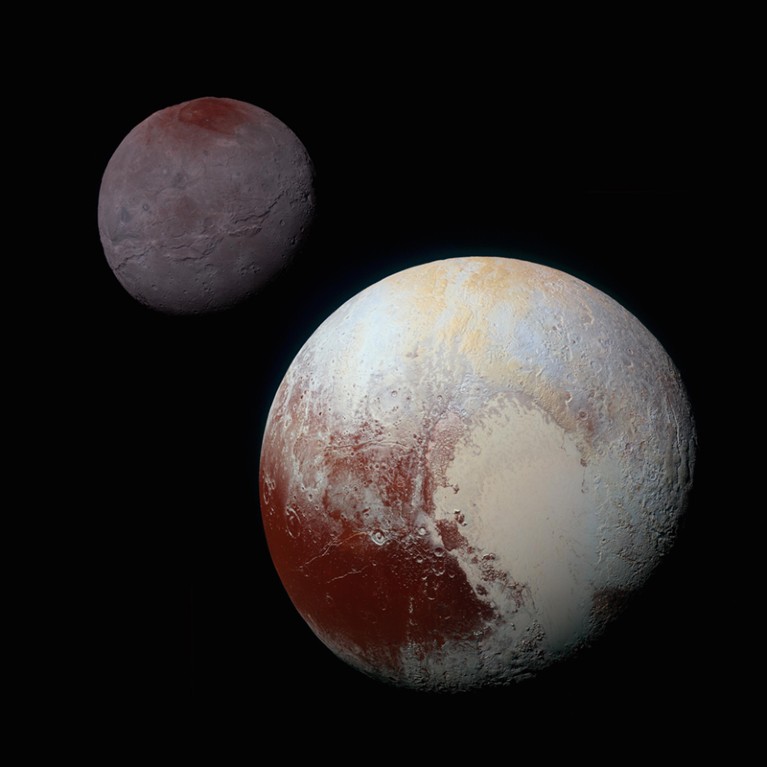
In the distant reaches of the Solar System, more than 8 billion kilometres from Earth, NASA’s New Horizons spacecraft is at the centre of a dispute over its future.
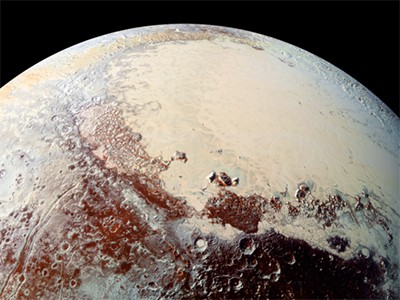
Pluto’s geology is unlike any other
The craft, which snapped stunning images during humanity’s first visit to Pluto in 2015, is within a few years of exiting the Kuiper belt, the realm of frozen objects that orbit the Sun beyond Neptune. In addition to Pluto, it has flown past another Kuiper belt object called Arrokoth, but has not found a third object to visit before it leaves. So NASA now plans to repurpose the spacecraft mainly as a heliophysics mission, to study space weather and other phenomena that it can measure from its unique location in the Solar System.
But some are unhappy with the decision, and worry that planetary studies are being truncated too soon. “Scientifically, I just don’t feel that we’re at diminishing returns yet,” says Kelsi Singer, the mission’s project scientist at the Southwest Research Institute in Boulder, Colorado.
Shifting New Horizons from being a planetary explorer to an interstellar emissary echoes what the agency did with the twin Voyager spacecraft after they visited the outer planets in the 1980s. “We have this perfectly working spacecraft that’s in a unique area,” says Nicola Fox, head of NASA’s science mission directorate in Washington DC. The agency wants to get the “best use” out of it, she says, as well as “open it up to as many scientists from as many disciplines as are interested”.
A mission takeover?
No one disputes that New Horizons has made stunning discoveries in the Kuiper belt, which contains debris left over from the Solar System’s early history. The spacecraft has uncovered secrets of Pluto’s icy surface and revealed more about how the building blocks of planets might have come together. Its 2019 fly-by of Arrokoth, a 35-kilometre-long Kuiper belt object made of two chunks of stuck-together space rock, “taught us so much about fundamental properties of planetary formation — completely transformational”, says Michele Bannister, a planetary scientist at the University of Canterbury in Christchurch, New Zealand.
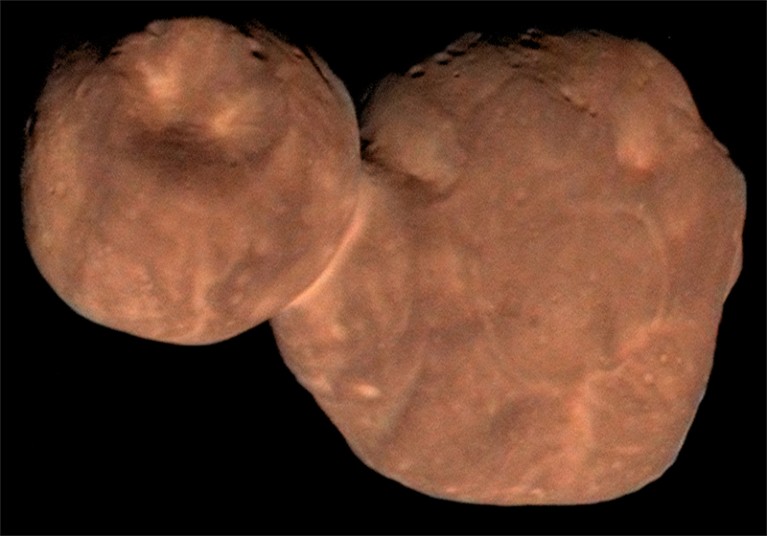
Without another Kuiper belt object to fly by, the planetary science for New Horizons becomes harder to justify, some say. Tensions arose last year after NASA’s planetary science division conducted a ‘senior review’ of its operational missions, as it does every few years. A panel of scientists evaluated eight missions, including New Horizons, for their recent scientific performance and future promise.
That review rated New Horizons’ current science as “excellent/very good” if planetary science, astrophysics and heliophysics were all included. The rating slid to “very good/good” for planetary science alone, in part because the science team’s proposed studies of Kuiper belt objects were “unlikely to dramatically improve the state of knowledge”, the review said. (The mission’s science team disputes that conclusion.)
NASA used the review in its decision to shift the spacecraft to being managed as a heliophysics mission, says Lori Glaze, head of the agency’s planetary science division. “Because that’s where the strength lies — in the science that can be conducted from here forward,” she says.
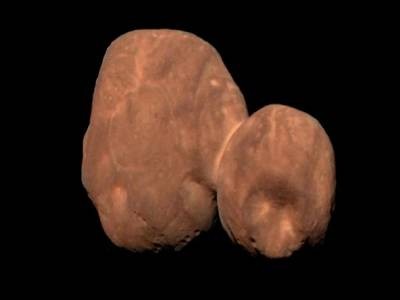
Solar System’s distant snowman comes into sharp focus
NASA will fund the mission from its planetary science budget until 30 September 2024. After that, management could be taken over by the much smaller heliophysics division, potentially involving a new group of scientists. In March, NASA asked US researchers for ideas on what science New Horizons could do across all disciplines, “to gauge the level of interest of the wider science community in pursuing the next phase of science leadership for the mission, and to estimate appropriate annual costs”.
To the mission’s current science team, this amounts to a takeover. “There’s going to be a boarding party on the first of October next year,” says Alan Stern, the mission’s principal investigator, who is also at the Southwest Research Institute. Fox responds that the New Horizons team was invited to submit a proposal to lead the spacecraft’s science in the heliophysics division starting in October 2024, and that the researchers declined.
Full replacement of a mission’s science team is relatively rare, says Amanda Hendrix, a researcher at the Planetary Science Institute in Boulder, Colorado. “This is kind of new territory that we’re getting into.”
In a ‘unique position’
Now the question is what science can still be done with New Horizons, and how. Although its plutonium power source is waning with time, it has enough to last probably another quarter of a century.
The craft is currently in the outer part of the Kuiper belt (see ‘Out there’), about which little is known because it can’t be observed well from Earth. “New Horizons is in a very unique position, and there’s basically no other way to get this information,” Singer says.
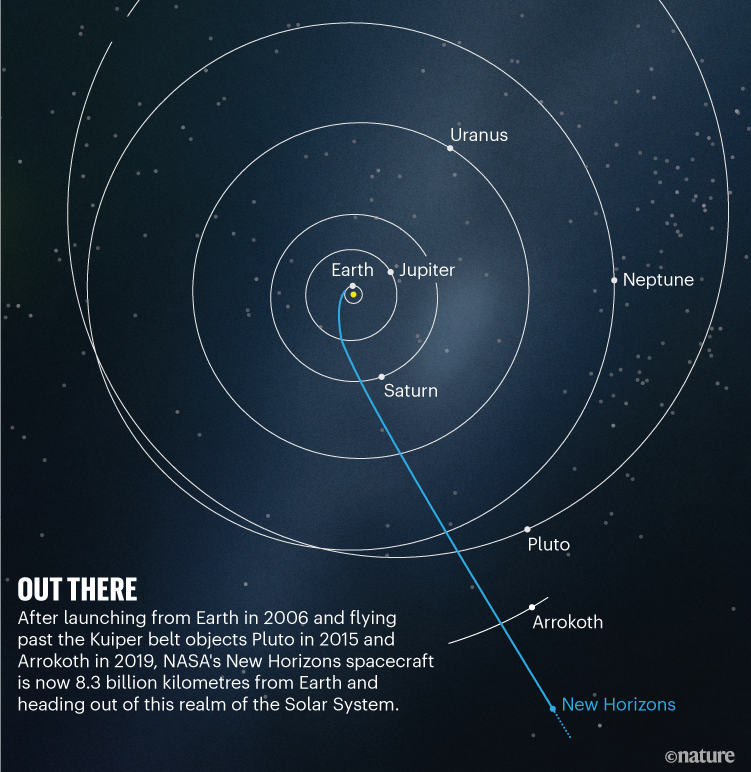
Among other studies, New Horizons has been taking repeated pictures of distant Kuiper belt objects, building up information on their shapes and surface properties. The spacecraft also analyses dust in the Kuiper belt — data that can shed light on how often space rocks smash into each other.
In recent years, the spacecraft has begun to broaden its focus. In astrophysics, New Horizons’ location allows it to study several types of background light that permeate the Solar System. And in heliophysics, ongoing and future studies are exploring the floods of charged particles emanating from the Sun. “It’s very valuable in conjunction with the two Voyagers,” says Stamatios Krimigis, a space physicist and the only scientist who has been involved with missions to all of the Solar System’s planets and Pluto.
New Horizons, which cost US$780 million to build, launch and fly past Pluto, currently costs NASA around $10 million annually. Both Fox and Glaze told Nature that the decision to shift the mission away from planetary science was not driven by budgetary issues, such as those that have delayed a Venus mission and raised concerns over the cost of Mars sample return.
Both also said that if a Kuiper belt object were found that New Horizons could reach, NASA would be open to discussing that, even if the mission had already been shifted to heliophysics. Stern and his team continue to look for a fly-by target in the time they have left.
The Link LonkMay 04, 2023 at 10:11PM
https://news.google.com/rss/articles/CBMiMmh0dHBzOi8vd3d3Lm5hdHVyZS5jb20vYXJ0aWNsZXMvZDQxNTg2LTAyMy0wMTUzMC150gEA?oc=5
Hard feelings over mission change for NASA's Pluto spacecraft - Nature.com
https://news.google.com/search?q=hard&hl=en-US&gl=US&ceid=US:en
No comments:
Post a Comment